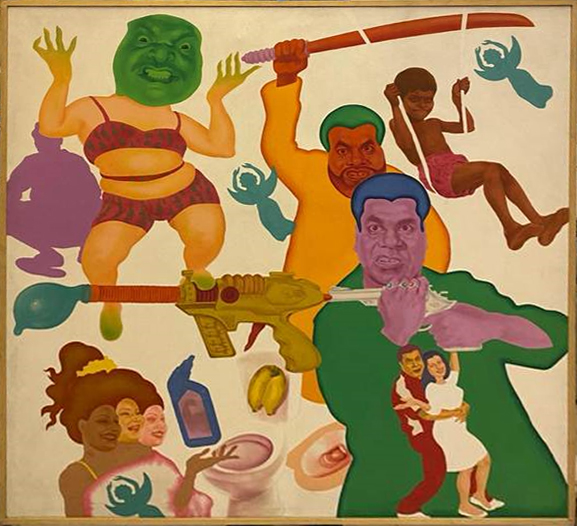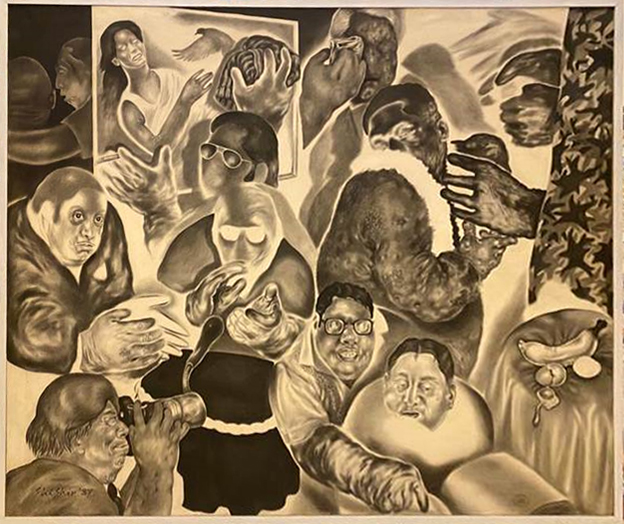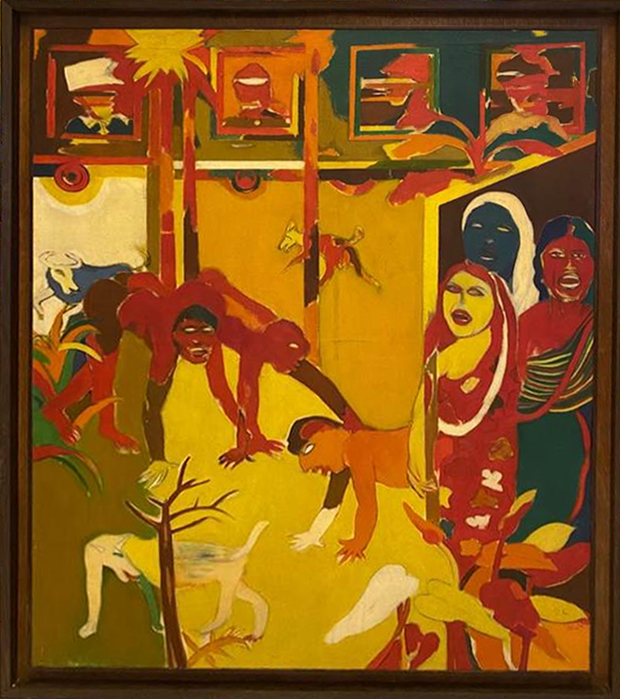
The Picture, 2002, by Shishir Bhattacharjee. This painting was sent to the exhibition by the Durjoy Bangladesh Foundation following collection from the artist
For one of the first times in history, the Sharjah Art Foundation has opened a major exhibition displaying pop culture modern and contemporary art from South Asia, titled Pop South Asia: Artistic Explorations in the Popular. Using humour, the works display the difficult issues that individuals and societies face on a daily basis
The exhibition, organised by Sharjah Art Foundation in collaboration with Kiran Nadar Museum of Art (KNMA) has brought together 40 intergenerational artists from Afghanistan, Bangladesh, India, Nepal, Pakistan and the diaspora, creating a show with over 100 artworks.

Could have been the story of a Hero, 1987, by Shishir Bhattacharjee. This painting was loaned by the Durjoy Bangladesh Foundation collection
Whilst there is a wide range of the style of art being spotlighted in the show, from print, cinematic and digital media to more traditional crafts and folk culture, all the artists, have a common theme running through their works: local capitalism. The works are accompanied by comments on identity, politics and borders.

In the Time of Pregnancy, 1990, by Dhali Al-Mamoon. This painting was sent to the exhibition by the Durjoy Bangladesh Foundation following collection from the artist
Curated by Iftikhar Dadi, artist and John H. Burris, Professor at Cornell University and Roobina Karode, Director and Chief Curator of the KNMA, Pop South Asia: Artistic Explorations in the Popular highlights the results of capitalism and media continuing to modernise and urbanise, not only in South Asia but on an international scale.
The show will be on display at Al Mureijah Art Spaces in Sharjah until 11th December 2022 after which it will be moved to the KNMA
This article was published in association with the Durjoy Bangladesh Foundation








